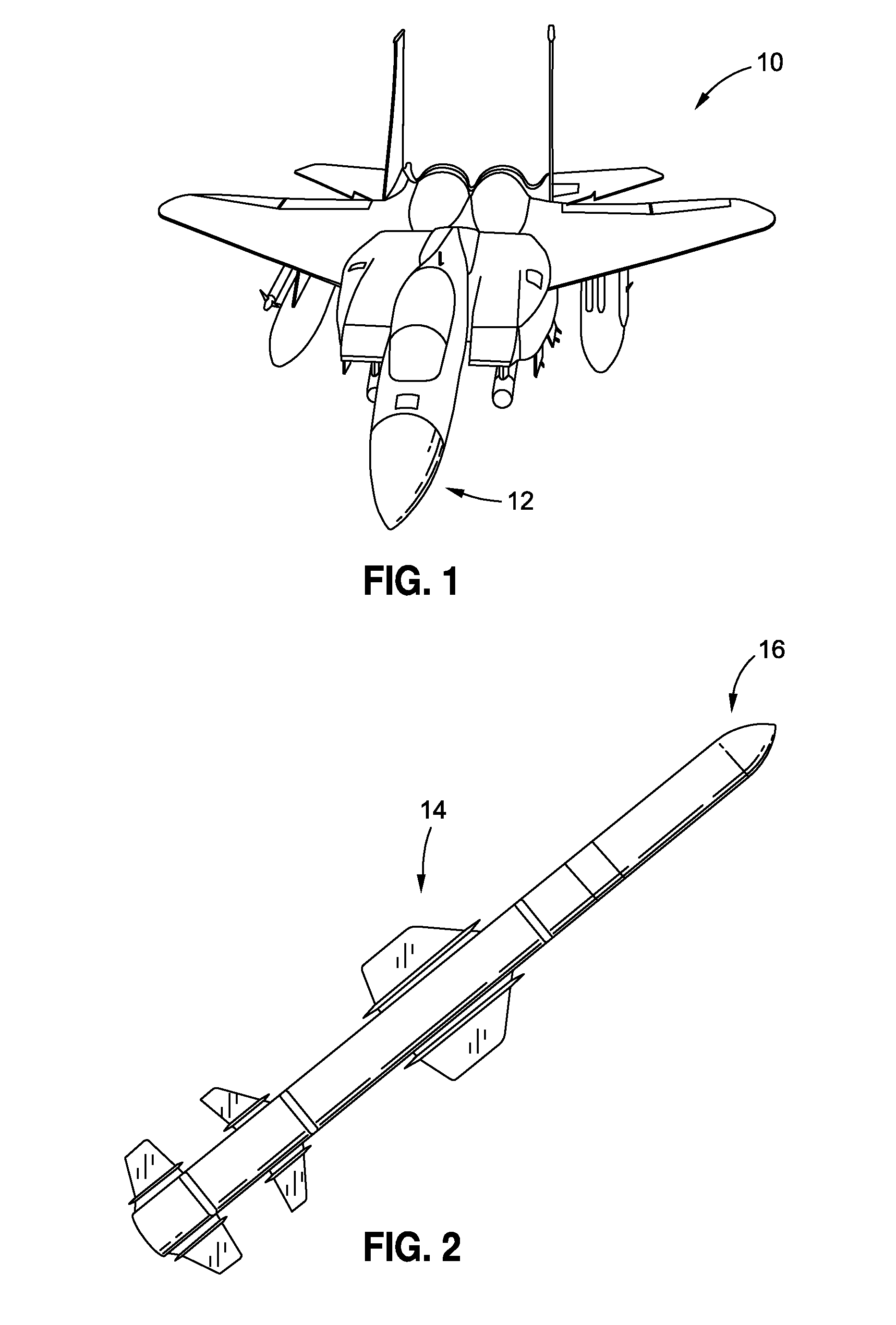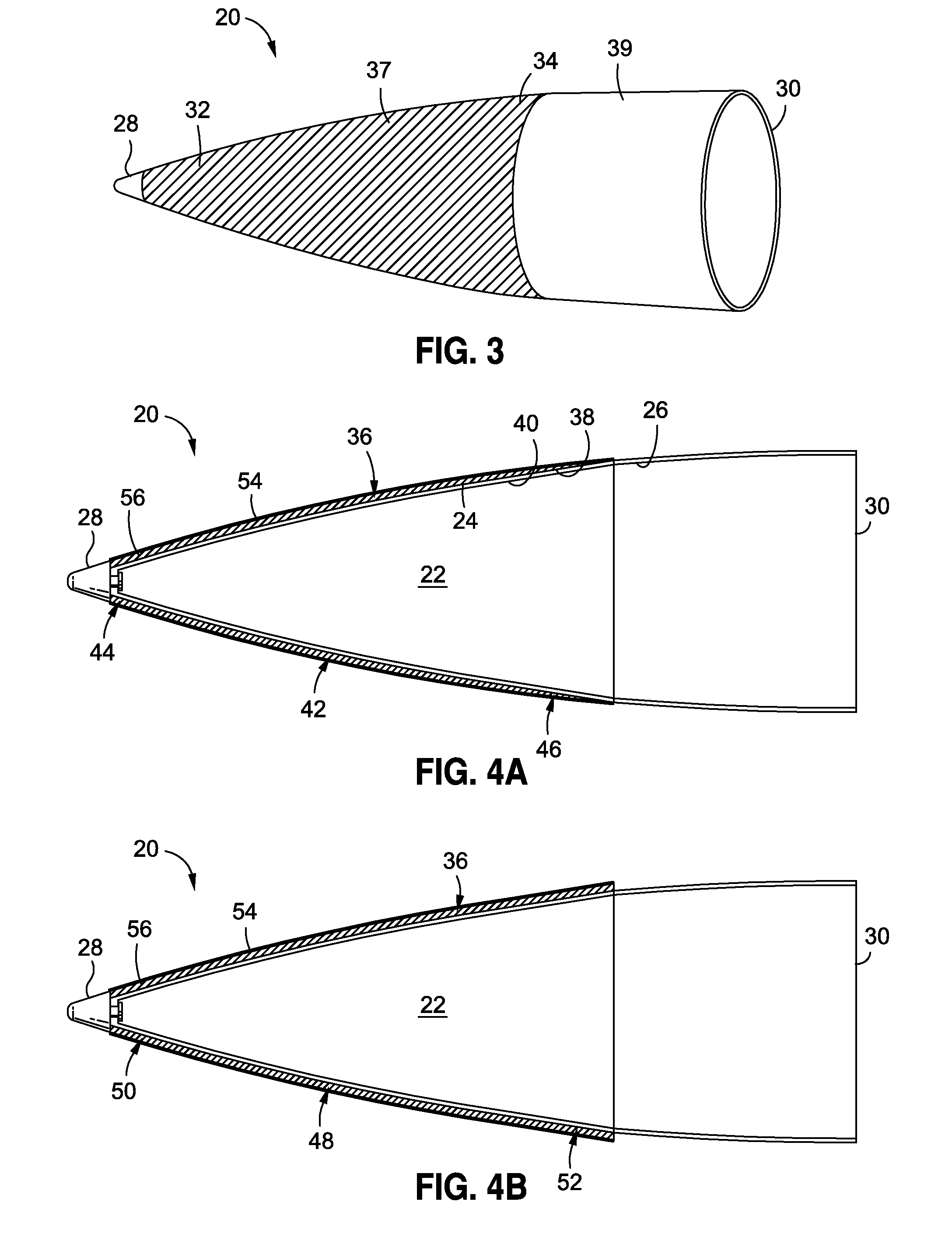Thermal Barrier Coated RF Radomes
a technology of thermal barrier and radome, which is applied in the field of radomes, can solve the problems of reducing thermal properties, affecting the performance of radomes, and reducing the thermal properties of radomes, so as to enhance the thermal environment surviveability of radomes, enhance the performance of radomes, and enhance the all weather flight capability of radomes
- Summary
- Abstract
- Description
- Claims
- Application Information
AI Technical Summary
Benefits of technology
Problems solved by technology
Method used
Image
Examples
Embodiment Construction
[0033]Disclosed embodiments will now be described more fully hereinafter with reference to the accompanying drawings, in which some, but not all of the disclosed embodiments are shown. Indeed, several different embodiments may be provided and should not be construed as limited to the embodiments set forth herein. Rather, these embodiments are provided so that this disclosure will be thorough and complete and will fully convey the scope of the disclosure to those skilled in the art.
[0034]FIG. 1 is an illustration of a front perspective view of an aircraft 10 having an exemplary RF radome 12 that may be coated using the thermal barrier coatings disclosed herein. FIG. 2 is an illustration of a side view of a missile 14 having an exemplary RF radome 16 that may be coated using the thermal barrier coatings disclosed herein. Preferably, the thermal barrier coatings disclosed herein may be used to coat high speed RF radomes used in high speed aircraft, missiles, supersonic airframes, space...
PUM
 Login to View More
Login to View More Abstract
Description
Claims
Application Information
 Login to View More
Login to View More - R&D
- Intellectual Property
- Life Sciences
- Materials
- Tech Scout
- Unparalleled Data Quality
- Higher Quality Content
- 60% Fewer Hallucinations
Browse by: Latest US Patents, China's latest patents, Technical Efficacy Thesaurus, Application Domain, Technology Topic, Popular Technical Reports.
© 2025 PatSnap. All rights reserved.Legal|Privacy policy|Modern Slavery Act Transparency Statement|Sitemap|About US| Contact US: help@patsnap.com



